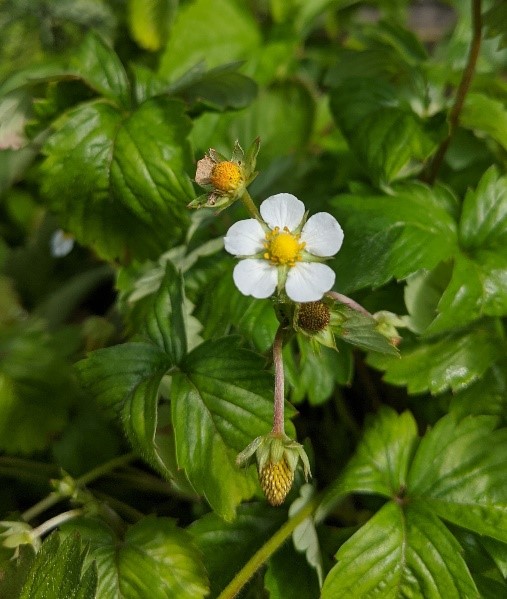Pollinators Putting Food on the Table

You may have heard how important it is to save pollinators. Pollinators visit flowers and move pollen about. You may have also heard that bees and other pollinators are essential for our food supply. But why? How do flowers and pollen turn into food?
This takes us to the essential question of the purpose of flowers. Sure, they are pretty, some smell nice and they feed wildlife. But their true purpose, biologically, is reproduction. Flowering plants reproduce with seeds, and each flower needs pollen in order to make seeds.

Find a flower and take a close look at it. It has petals, the stigma and style, stamen (with pollen) and the ovary. There are little eggs in the ovary called ovules. When the pollen brushes onto the stigma, it travels down the style to the ovary. Can you find the ovary on your flower? There, the pollen joins with the ovules and starts to grow … each ovule will become a seed! As they grow, the ovary swells. The petals and other flower parts tend to shrivel and fall away. Now, all you will see is the ovary that has transformed into a seed pod, nut or fruit. Yes, sometimes the seeds grow with deliciousness around them, like avocados, apples, cucumbers, peaches, snap peas, pawpaws … and on and on!
What other foods do we get from pollinated flowers? Picture a backyard garden, a farm or an orchard. Many foods we grow come from the flower of a plant.

Between 75% and 95% of flowering plants need help getting pollinated, meaning they don’t self-pollinate or get pollinated by wind. And roughly 1/3 of our food comes from these plants! Others, like root vegetables, do not come directly from a flower, but the plant still needs flowers to make seeds that can grow future plants. We truly need flowers for our food, and flowers truly need pollinators!
Below are some photos of flowers of foods we eat. Can you tell what food each flower helps grow? (Answers listed below each photo.)




When we plant or support pollinator habitats, we are helping ensure the future of pollinator species. But it’s much more than that! We are also helping plants reproduce, keeping ecosystems healthy, providing wildlife with food sources and putting food on our tables. Pollinators sure do have an important role!
—
Lisa Salehpour
Nature Interpreter, Sharon Woods
